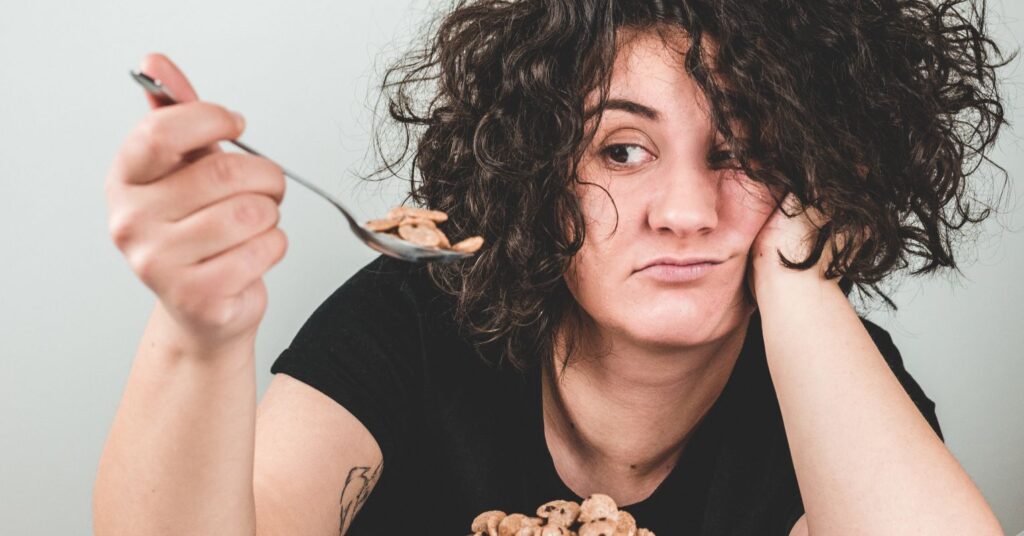I finished reading the book Saving Our Own Lives by Shira Hassan recently, and it stands out to me as the first book I’ve ever read that applies a harm reduction framework to eating disordered behaviors. The conversation with Gloria Lucas included in the book discusses this subject, and what it looks like in practice the most thoroughly.
article continues after advertisement
Harm reduction, for those unfamiliar, is an approach to public health issues that prioritizes body autonomy over forcing a person to meet external standard of ‘healthiness’ or moral correctness. Harm reduction holds that society has a responsibility to care for all people, no matter their choices, behaviors, or desires. It views individuals as the sole authority on what happens to their own bodies — and it acknowledges that trying to force an outcome or behavior change on a person who doesn’t want it is not only destined to fail, it’s a violation of their consent and dignity.
Source: Image by Tamas Pap / Unsplash
Harm reductionists are perhaps most well-known for distributing clean needles and overdose kits to people who use intravenous drugs. But a harm reduction approach can be applied to nearly any health-related behavior that’s been pathologized: drinking, drug use, sex work, living with an abuser, self-harming, gambling, and even attempting suicide. Yet Shira Hassan’s book is the first one where I’ve seen eating disordered behaviors discussed from a liberatory harm reduction perspective.
Nearly every available piece of writing or scholarship on the subject of eating disorders assumes that the goal of full recovery should be imposed on the sufferer, whether they like it or not. This outlook does not make any sense, given that eating disorders touch so many of the actions and choices humans engage in on a daily basis. Expecting a person to recover from all their eating disordered behaviors at once is a bit like asking a depressed person to never report another negative thought.
article continues after advertisement
What’s more, any significant move toward eating disorder recovery can shake loose new forms of unwellness. Refeeding yourself throws your toileting habits into a tailspin. Gaining weight forces you to go clothes shopping, which can set off all kinds of self-hating thoughts and compulsions. Spending money on psychological treatment can eat into your food budget, triggering a scarcity mentality at the absolute worst possible time. You can’t get well all at once. Instead, you have to pick the forms of illness you can endure the best.
This is even more true when we account for the fact that many eating disorder sufferers do not wish to recover, because their behaviors serve many purposes. Sometimes an eating disorder sufferer adopts a religious workout schedule or a limited diet in order to impose control on an otherwise uncontrollable reality. It may be destructive, but it can also be a person’s only means of expressing body autonomy.
Eating disorders are one of the most deadly mental health diagnoses around, so I don’t say any of this lightly. In an ideal world, no person would feel the need to abuse their bodies with purging, excessive exercise, or starvation. But every behavior that a person chooses exists on a spectrum between helpful and harmful, and each of these individual choices can be made in a harm-reducing way — if we choose to stop shaming eating disorder sufferers for engaging in them, and get curious about what needs those behaviors meet for them instead.
article continues after advertisement
I have not seen many people talking about eating disorders from a harm reduction point of view, and I think it is desperately needed. Online, all eating disorder sufferers see is a lot of well-intentioned encouragement that assumes what we ought to want. But where do you turn if you’re still active in your eating disorder and not committed to full recovery? The toxicity of the pro-anorexia and pro-bulimia sites is the only place left for you to turn, which makes matters so much worse.
We need to develop the eating disorder equivalent of needle exchange spaces for people who use intravenous drugs. I want to see spaces where eating disordered people can discuss strategies for mitigating the harm of their eating disorder without being admonished for not wanting recovery yet, or ever. I don’t ever want to see a person institutionalized and their body controlled without their prior consent, even if it’s in the name of helping them find healing. If an eating disorder sufferer already has a fractured relationship with their body and their needs, no good can come from locking them up against their will and shoving a feeding tube down their throat.
Eating Disorders Essential Reads
We already know empirically that eating disorders are sticky and relapse-ridden; only about 21 percent of people ‘get better’ and make a full recovery, and even for them it takes years. So why are we still applying the ideals of abstinence to all eating disorder patients, when we know that approach doesn’t work for most substance users, gamblers, survival sex workers, or people who self-harm?
article continues after advertisement
With such an abundant research literature supporting the notion of harm reduction, why do our hospitals, shelters, government services, and nonprofits keep pushing a one-size-fits-all goal of recovery onto people who make stigmatized choices?
A softer, freer, more accepting, more life-affirming view of addictions and compulsive behaviors is possible. It’s evident in our history. Through the work of movements such as ACT UP, we’ve seen how a harm reduction approach can save the lives of sexually active queer people and drug users. And can embrace harm reduction as a way to preserve the dignity and freedom of eating disorder sufferers, too — as well as anyone else who has been told their needs are too large, too inappropriate, too wrong, or too bizarre. Stigma kills, even as it claims to cure. But acceptance sets us free.

